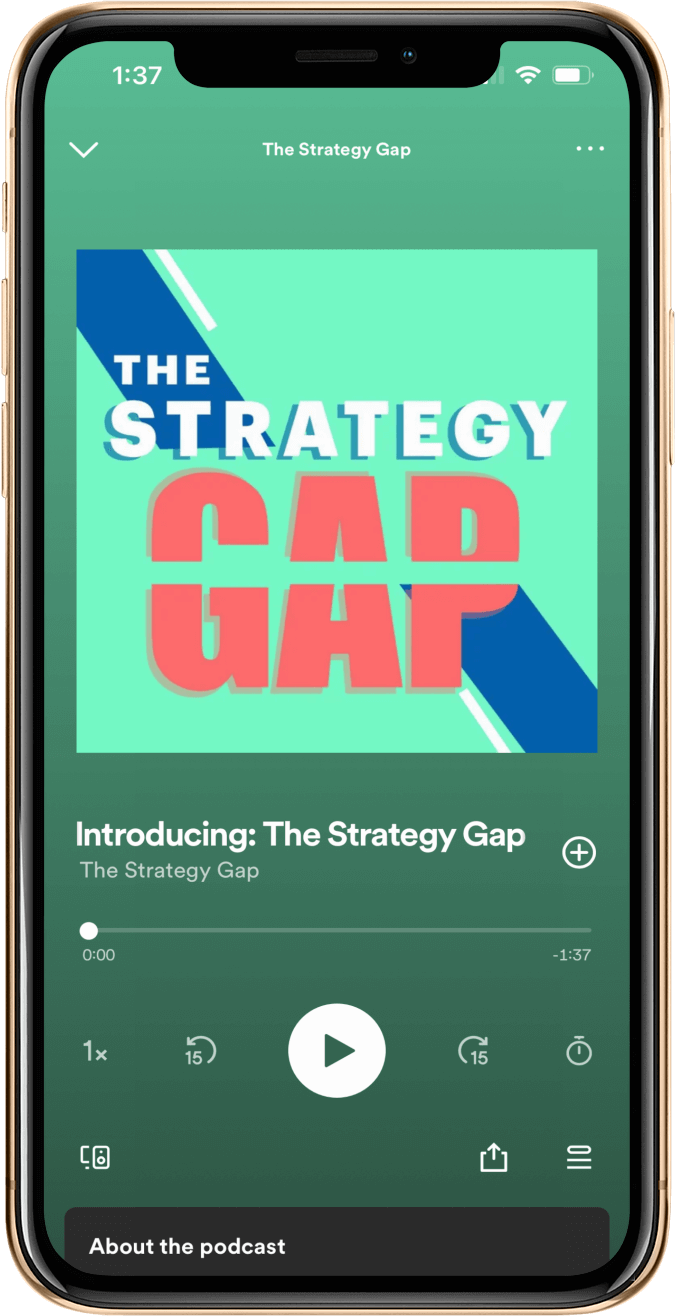Imagine you’re in a board room. All of the end-of-the-year celebrations are coming to a close, and everyone is excited about the opportunities coming in the months ahead.
Long-standing problems that were moved to the back burner during the hard pushes of Q3 and Q4 can finally be addressed. The market can be analyzed to find new areas for growth. Brands can take on new, innovative styles.
But, what happens to that momentum when Q2 is in full swing, and nearly none of these ideas have been executed?
Leaders in every organization are full of great ideas, yet they often get lost in the hustle and bustle of the day-to-day, leading to disappointment and stagnancy. Strong ideas need even stronger guidance and direction, with constant cultivation for progress.
That’s where BizOps comes in. Shobhna Upadhyaya, a distinguished BizOps and Strategy Leader, brings 15+ years of experience in strategy in operations to the table. She shares the secrets to formulating ideas that stick to push your business to the next level.
Listen to The Strategy Gap
A podcast about the space between savvy strategy and practical execution, including everything that can go wrong on the way.

BizOps: What is it, and why is it important?
BizOps, short for Business Operations, is the team that articulates the business’s strategy internally and then acts as the connective tissue between the business’s departments and functions to see that the strategy is executed.
Within some organizations, the finance team’s closer encounters with the engineering team could be simple water cooler discussions. In others, marketing may only see human resources during quarterly meetings. When strategic initiatives require these teams to work together or complete simultaneous objectives, BizOps serves to ensure they remain connected and aligned.
Bridging the gap between ideation and execution
Ensuring ideas are executed requires BizOps to connect the dots between high-level vision and strategy to the tactical roadmap of the organization.
“We have to go beyond the vision and mission statements and articulate when it comes to optimal market segments, value propositions, intended target audience, and more. We take our strategic pillars and convert them into short-term goals for the company,” Shobhna says.
Step one is turning the ideas into actionable steps and putting that clearly defined roadmap on paper. Step two is partnering with teams to hold them accountable.
“You have to connect with different functions and teams to hold that team responsible for delivering on that roadmap, making progress, and reporting on that progress,” Shobhna says. “This doesn’t happen in a week or two. This is a multi-quarter, multi-month journey.”
The embedded but objective model
Each BizOps team will look different to meet the specific needs of the company. Generally speaking, however, the model that is most efficient across the board is one that is embedded within the business, understands essential functions across a variety of teams, and does not take on the role of an internal consulting group.
At the same time, an embedded model must remain objective to effectively make progress within an organization.
Picking the right talent
When selecting talent for your BizOps team, it is crucial to find professionals who have a firm understanding of essential business functions and can develop consistent, trusting relationships with each department.
No team reports directly to the BizOps leaders, so talent within the team must be able to build relationships with other teams so they are accepting of feedback and willing to collaborate while breaking out of silos.
Steps for effective brainstorming
While every boardroom meeting is full of fantastic ideas, effective strategy building requires realistic, actionable plans — and those require proper brainstorming.
Step one: Prework
Before beginning a brainstorming session, BizOps should perform essential functions to provide the teams with data needed to determine future directions. This can include market analysis, customer analysis, target market research, research into internal and external problems the organization is facing, research into competitors, market growth projections, and more.
Prework is crucial, as the findings will lead the BizOps team to make decisions about future avenues of growth and guide them in selecting the team members who should be involved in the brainstorming process.
Step two: Vision statement
Beginning with the vision statement, BizOps should expand on the future focus of the organization with the goal being a cross-functional effort for brainstorming.
Based on their findings during the prework process, BizOps will select the right team members to include and the guiding topics of discussion for the meeting.
Step three: Brainstorming meeting
“Ideally, there will be no more than 25 people in the room to keep it an effective meeting. In that session, you would talk about different solutions, and create breakout groups with individual subtopics or prompts so they can come up with ideas or solutions,” Shobhna says.
The results of this meeting do not have to be perfect, yet they should cover all of the bases of value to those in the room.
Step four: Synthesising and determining business impact
Following the brainstorming sessions, a smaller group of leaders should come together to synthesize ideas and determine the potential business impact of suggested initiatives.
From here, the draft strategic plans should be shared with the team members from the original meeting to seek feedback. Once the feedback is received and necessary revisions are made, execution can begin.
Interested in learning more about BizOps and the value it can bring to your business? Listen to our full conversation with Shobhna, where we take a deep dive into BizOps functions, effective brainstorming, consistency with strategy, and more. Listen on Apple Podcasts, Spotify, or your favorite podcast player.



